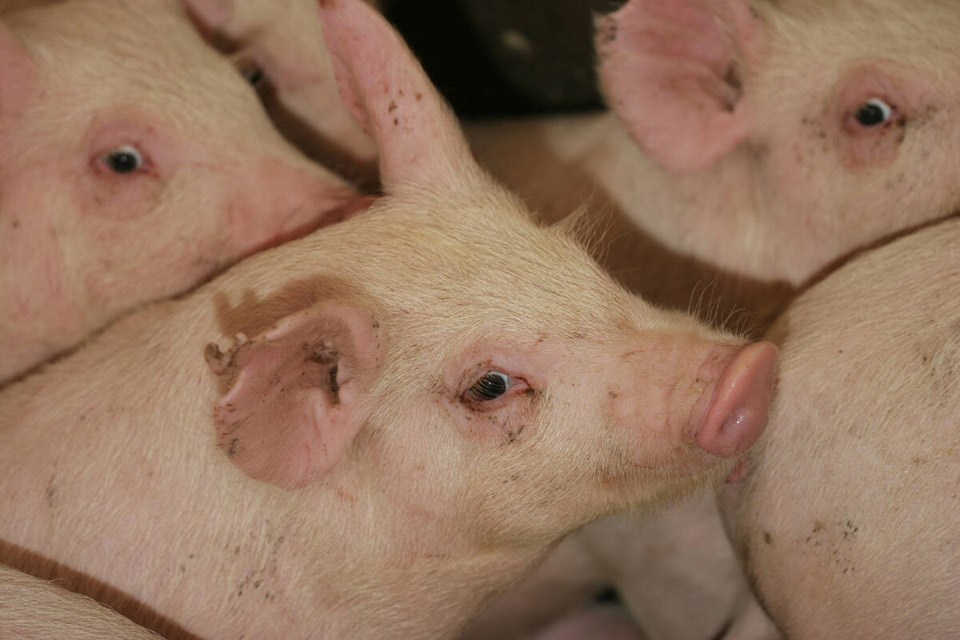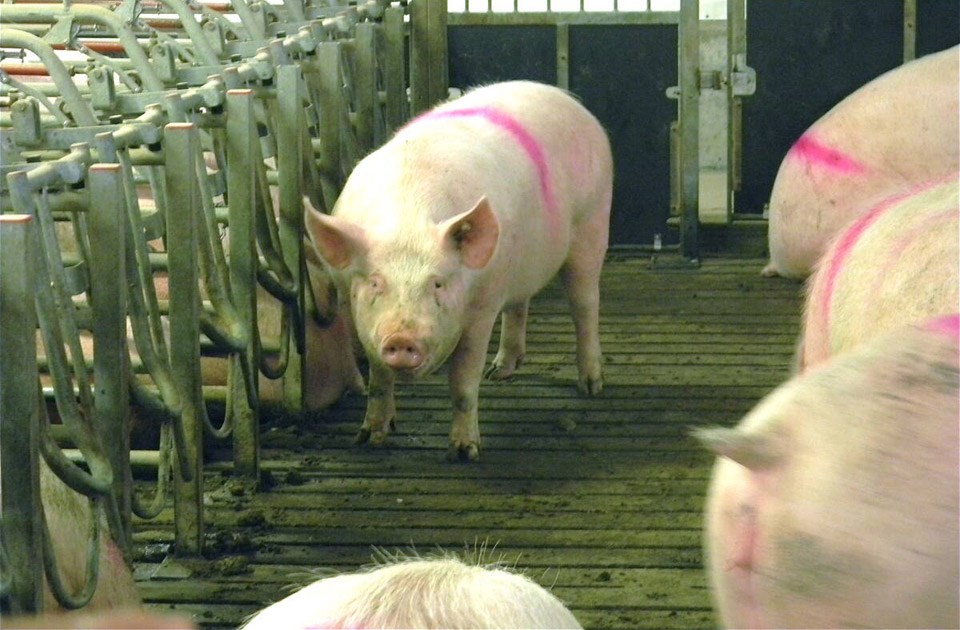WESTERN PRODUCER — Feeding pigs individualized diets based on real-time data could cut costs and environmental impacts while maintaining animal performance, new research from the University of Guelph suggests.
Aline Remus is an associate professor at the University of Guelph with a focus on precision feeding. She spoke at a virtual symposium hosted by Agriculture and Agri-Food Canada’s Sherbrooke Research and Development Centre on June 10.
“Individual precision feeding means daily tailoring diets for each one of the animals in our pens. So, we use real-time data obtained for each one of these animals,” Remus said.
She found that tailoring individual pigs’ diets can reduce nitrogen and phosphorus excretion by 40 per cent and decrease greenhouse gas emissions by seven per cent compared to traditional group feeding methods.
The technique can also decrease feeding costs by 12 per cent while reducing labour requirements for handling fees and caring for animals, Remus said.
Using precision feeding techniques in pig growing operations can reduce production cost by eight per cent, protein and phosphorus intake by 25 per cent, and excretion by 40 per cent, according to a paper published by Oxford University Press.
Traditional phase feeding provides the same diet to all animals in a pen during a specific growth phase. In contrast, precision feeding adjusts each animal’s diet daily based on individual data, gradually decreasing nutrient supply as animals approach their requirements.
“We not only can feed these animals closer to the requirements, but we can also tailor their growth,” Remus said.
Changing the mix of amino acids and energy in the pigs’ diet changes the growth rate of the animals and also their body composition.
Testing metabolic responses
The study involved 60 pigs divided equally between conventional group phase feeding and individual precision feeding systems. To test how the different feeding methods affected metabolic responses to stress researchers used a 24-hour fasting protocol.
“Fasting 24 hours is a great model for physiological stress,” Remus said, adding that such extended periods without feed can worsen feed conversion by seven points and increase costs by three U.S. dollars per pig.
Results showed that despite receiving 23 per cent less lysine, an essential amino acid, precision-fed pigs maintained similar blood concentrations of the nutrient compared to group-fed animals.
“We have a very similar plasma concentration, which means these animals are probably very efficient, (at) preserving and keeping this lysine,” she said.
 Precision feeding is one way the pork industry is incorporating technology onto their farms. | Photo by Michael Raine
Precision feeding is one way the pork industry is incorporating technology onto their farms. | Photo by Michael Raine
Surprising efficiency findings
The precision-fed pigs broke down nitrogen more efficiently, demonstrated better nitrogen retention and showed enhanced metabolic pathways related to antioxidant defenses and stress response.
The research suggests precision-fed animals are more reactive and can quickly mobilize their reserves and respond better to oxidative stress than group-fed pigs. This finding surprised Remus, given that precision-fed animals receive fewer nutrients overall.
Market opportunities
The study also found evidence that precision-fed pigs may produce different muscle proteins, including increased carnosine, an antioxidant compound that some companies are trying to enhance in meat products.
“There is an opportunity to actually not only decrease environmental impact, but also have a niche market,” Remus said.
The research concludes that precision feeding creates metabolically flexible animals that can adapt to nutritional challenges while using resources more efficiently.
“In practice, this means that we can formulate diets closer to the requirement of the animals, especially in terms of amino acids, without compromising resilience,” Remus said.
About the author
Miranda Leybourne is a Glacier FarmMedia reporter based in Neepawa, Manitoba with eight years of journalism experience, specializing in agricultural reporting. Born in northern Ontario and raised in northern Manitoba, she brings a deep, personal understanding of rural life to her storytelling.
A graduate of Assiniboine College’s media production program, Miranda began her journalism career in 2007 as the agriculture reporter at 730 CKDM in Dauphin. After taking time off to raise her two children, she returned to the newsroom once they were in full-time elementary school. From June 2022 to May 2024, she covered the ag sector for the Brandon Sun before joining Glacier FarmMedia. Miranda has a strong interest in organic and regenerative agriculture and is passionate about reporting on sustainable farming practices. You can reach Miranda at [email protected].
Related Coverage
Biogas pitched to turn farm waste into renewable energy
Canadian farms at risk from animal activism
What can Canada learn from digital agriculture policy in other countries?
Canada falling short on digital agriculture: FEATURE STORY
Rick Clark joins MFGA regenerative agriculture conference speaker lineup



